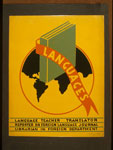At a Glance
Topics
Website
Features
Duration
Grade(s)
Lesson Format
Download
What Do You Mean?: How Language Changes Over Time
Students create sentences using words whose meanings have changed since the 17th century. They then discover how their sentences change meaning when the words’ 17th century meanings are used.
Review

This lesson provides students with a simple introduction to a fundamental and often elusive component of historical thinking—placing the prose of an historical document in its appropriate context. Students begin with a list of words from 17th-century English that are still in use in the 21st century. Students create sentences using these words based on their modern meanings, then note how their sentences change in meaning with the 17th-century usage of the words. The short follow-up discussion focuses on how such changes in the meanings of words make the historian’s task of analyzing primary sources challenging.
Contextualization, or placing a historical text in its appropriate social, political, cultural, and even linguistic context, is a challenging task even for collegiate students of history. Because contextual influences are often subtle and linked to extensive background knowledge, younger students can have difficulty noticing them, and teaching younger students to recognize the historical context of a document can be a daunting task when students are already dealing with challenging texts. This lesson introduces the idea of context through the changing meaning of words. Rather than dealing with the meanings of entire texts, students are focusing on the meanings of individual words. Thus, this lesson provides a useful starting point in laying the foundation for historical thinking skills like contextualization and the close reading of documents, while clearly showing that language changes over time.
Notes
| Field | Criteria | Comments | ||
|---|---|---|---|---|
| Historical Content | Is historically accurate? | Yes |
||
| Includes historical background? | Yes |
|||
| Requires students to read and write? | No |
|||
| Analytic Thinking | Requires students to analyze or construct interpretations using evidence? | No |
||
| Requires close reading and attention to source information? | No |
|||
| Scaffolding | Is appropriate for stated audience? | Yes |
||
| Includes materials and strategies for scaffolding and supporting student thinking? | No |
|||
| Lesson Structure | Includes assessment criteria and strategies that focus on historical understanding? | No |
||
| Defines clear learning goals and progresses logically? | Yes |
|||
| Includes clear directions and is realistic in normal classroom settings? | Yes |
|||